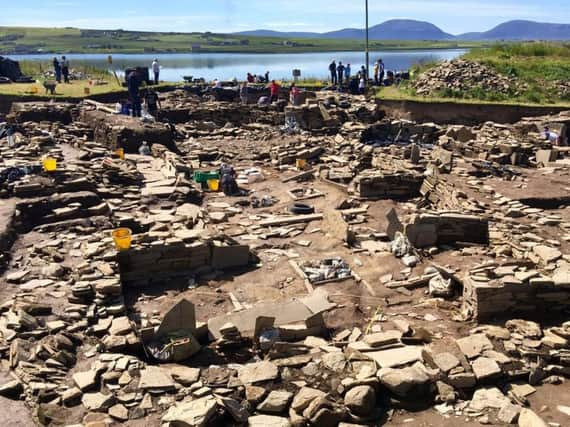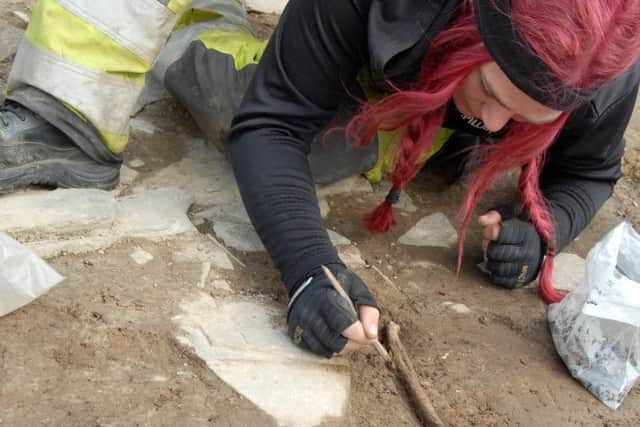Human bone found at 5,000-year-old site in Orkney


Archaeologists believe the slender bone found at the Ness of Brodgar is that of a young woman with further testing to confirm her age, diet and lifestyle.
The lower arm bone was discovered in the buttress of one of the buildings which once made up this remarkable scattering of buildings where people came to feast, trade and celebrate important celestial and political events.


Advertisement
Hide AdAdvertisement
Hide AdLarge cattle leg bones, a carved stone ball and a decorated stone were found in the same area as the bone.
Dr Jo McKenzie, of the University of Bradford, has been supervising the dig in the area where the bone, believed to be part of a lower arm, was found.
Dr McKenzie added "It makes you stand back and think about the structure and what we're excavating, and what the actual placement of the material meant to them.
"And looking wider, at the Ness of Brodgar we've found very few human remains. So they have great significance in that sense as well."
In 2016, part of an upper arm bone of an adult was found next to a large collection of very large cattle leg bones.
Genetic testing should be able to establish whether the two bones belonged to the same individual or whether they came from two people who were in some way related.
Charlie Scovell, an archaeologist from London, was one of those who found the latest bone close to Structure 10 on the site, which dates from around 2,900BC.
He told BBC Orkney that being involved in the find was an "easy 10 out of 10" because of the special nature of Ness of Brodgar.
" I'll be telling people about it forever, I think".
Advertisement
Hide AdAdvertisement
Hide AdSite director Dr Nick Card added: "We're in the process of fully recording it, creating 3D models of it, doing lots of photography, in between reporting it to Police Scotland. It's human remains, so despite the fact that it's probably about 5,000 years old the police always want to find out about these things."
Meanwhile, archaeologists have also found a potential new standing stone at the Ness of Brodgar site.
The two-month dig will end this week with the site to be covered up again for the winter.
Work at the site, which was first discovered in 2003, continues to reveal an increasingly large complex of monumental Neolithic structures together with over 800 examples of ‘artwork’, 90,000 pieces of pottery and stone tools, including polished stone axes and maceheads.
The earliest evidence onsite dates as far back as 3,500 BC with activity stopping around 2,300BC.
It is thought that The Ness of Brodgar was a gathering place where Neolithic people from Orkney and further
afield would come together.
Since 'Structure One' first appeared in 2003, over 30 additional structures have been found since.
The largest structure onsite is 'Structure Ten', where the latest bone was found. It measures some 25m long, 19m across and has 4m thick walls.
It was the last structure in use on the site with it closing around 2,400 BC.